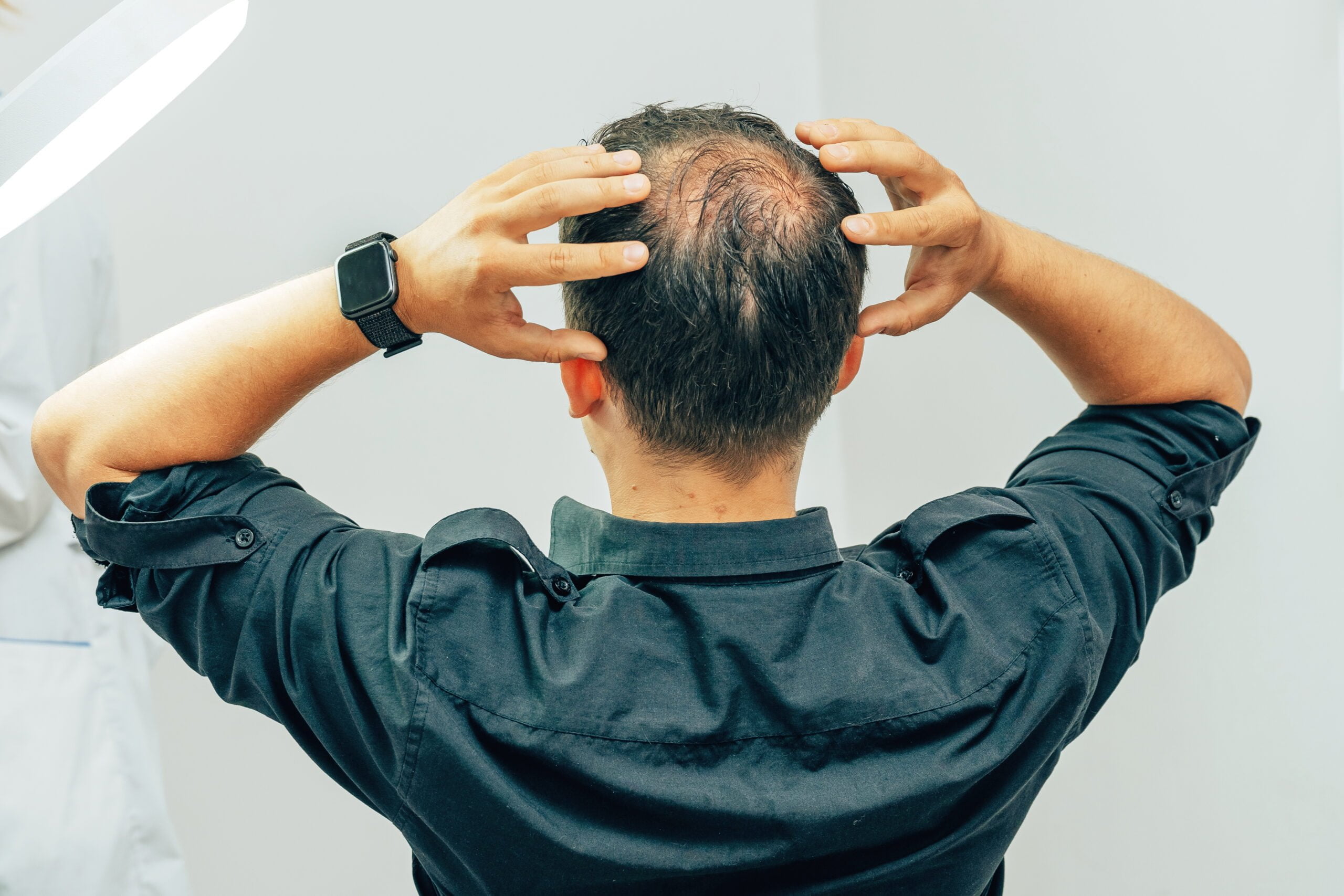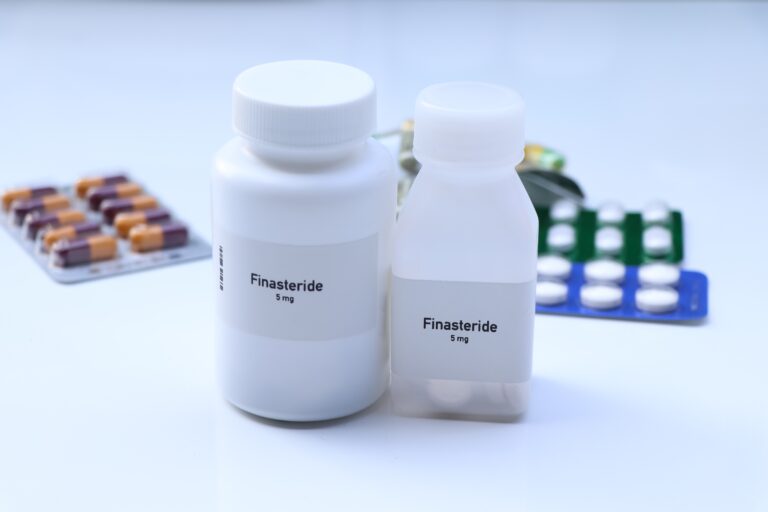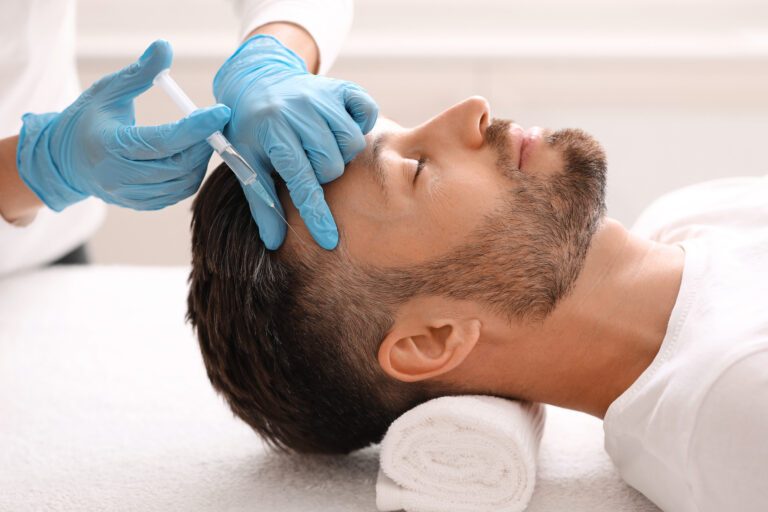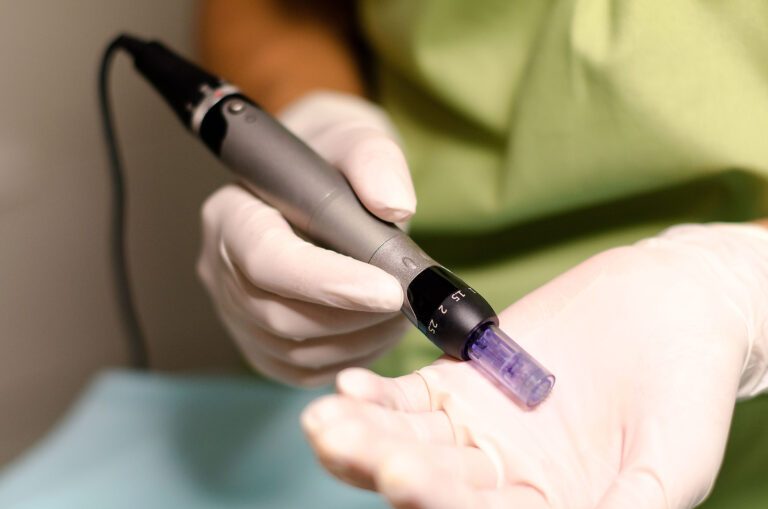Ultimate Guide to Hair Transplants for a Balding Crown
A balding crown can be a frustrating and confidence-shattering experience for many men.
So, they resort to hair transplant crown surgeries to restore their hair and regain its natural look. Nonetheless, is this the best option for you?
In this guide, we’ll walk you through all you need to know about hair transplants for a balding crown.
Normal Crown vs. Thinning Crown: How to Tell If You Need Restoration?
Due to the natural thinning appearance of the crown area in many men, sometimes they can’t tell if their crown is thinning or natural.
Here’s how to distinguish between a natural and thinning crown:
Normal Male Hair Crown
The crown area typically has a twisting shape known as a “whorl”. This pattern makes the crown seem thinner than the other scalp areas.
This applies to everyone, not just those experiencing hair loss. Even men who don’t have hair loss can have visible gaps and thin areas in their crowns.
However, crown thinning is usually subtle for the average person and doesn’t continue to worsen over time.
Thinning Male Hair Crown
There are a couple of signs of a severely thinning crown:
- The hair loss in the crown area is pronounced, and you can clearly see wide areas of the scalp.
- It gets worse over a short time.
In some instances, hair loss in the crown can occur rapidly in young individuals—specifically those in their late 20s and early 30s.
For these cases, patients may also experience hair loss in the frontal area. This type of hair loss in the crown is often a part of male pattern baldness.
The Norwood scale can help you understand how this baldness process develops gradually. That way you can expect what your future hair will look like.
How Does a Crown Hair Transplant Procedure Work?
A hair transplant for thinning crown is a surgical procedure to restore hair in the crown area of the scalp.
The surgery can be performed using either the FUE or FUT method. Still, it’s up to the physician to determine the best approach for your specific hair condition.
During the surgery, the surgeon first harvests hair follicles from the sides and back of the head. These areas are referred to as the donor areas. Then, the harvested hair is then transplanted to the crown area.
The newly transplanted hair usually starts to look and grow like a normal one within 1-1.5 years. Over time, it thickens, providing noticeable coverage in that region.
Nonetheless, the crown may still have minor gaps and fine points after the surgery. That’s because the surgeon doesn’t reconstruct your crown with perfectly uniform hair.
Instead, they leave some thinning spots intentionally to make the hair appear as natural as possible.
What to Consider Before Undergoing a Crown Transplant?
Before deciding to transplant your crown, you should consider the following three things carefully:
1. The Other Thinning Areas
Despite being highly bothersome, you shouldn’t prioritize transplanting the crown over other bald areas of the scalp.
Cosmetic-wise, there are other more important regions of the scalp to consider for transplanting before the crown.
Due to its high location on the back of the head, the crown area is less noticeable than the frontal regions. Areas such as the hairline and frontal scalp are more visible.
That way, if you’re experiencing thinning in both the crown and other more visible areas, it’s recommended to treat the easily seen areas first.
That’s also because there may not be enough grafts available to cover the entire bald region.
In this situation, it wouldn’t be wise to only cover the partially hidden crown and leave the other obvious areas untreated.
2. Your Age and Stage of Baldness
Patients in their 20s and 30s should undergo thorough baldness screening before deciding to have a crown transplant.
At a young age, there’s still a high probability of continued hair loss in the future. If this is the case, postponing the transplant decision is recommended until the final scalp shape has formed.
As previously mentioned, the crown isn’t the most visible area on the head. That way, giving it the limited grafts available in the donor areas might not be a wise choice.
If a patient is prone to future baldness in the hairline or frontal scalp, it may be better to donate the grafts to these areas rather than the crown.
Given that, it’s essential to seek advice from a hair restoration physician on handling the overall hair loss, not only the crown.
This step is to ensure you’ll treat your crown without sacrificing the overall natural shape of your hair.
3. The Non-Surgical Solutions
There are many non-surgical options available for treating hair loss. They include highly effective FDA-approved drugs, such as Minoxidil and Finasteride.
These treatments can be super beneficial for those in the early stages of baldness.
Plus, some cosmetic clinics offer plasma injections that claim to boost hair growth and limit hair loss.
So, it’s a good idea to talk to your doctor about these solutions before considering a surgical option.
What Is the Number of Grafts Required for a Crown Hair Transplant?
The crown area for most people measures between 60 and 100 cm².
Based on that, the usual range for transplanted grafts in the crown area ranges from 800 to 1500 grafts.
This may seem like a low number compared to the area’s large size. However, surgeons avoid inserting too many grafts in the crown.
This is to achieve a natural-looking result and avoid a fake appearance.
How Much Does It Cost to Get Hair Transplants for a Balding Crown?
The cost of a hair transplant for bald spots is calculated per graft. Given that, the price of a graft can hugely vary depending on multiple factors.
Here are the most influential ones:
- The overall number of hair grafts needed
- The location and reputation of the clinic
- The experience of the surgeon
Depending on these factors, the cost of a graft in the United States can range from $2 to $10. This means that a 1000 grafts hair transplant crown surgery can cost from $2,000 to $10,000.
Additionally, it’s crucial to consider post-surgery expenses like medications, follow-up appointments, and any unexpected costs.
What Are the Post-Surgery Care Steps?
Caring for your scalp after a FUT or FUE hair transplant crown surgery is vital for achieving the desired results. Nonetheless, it can be challenging during the initial weeks post-surgery.
You may feel numbness for one or two days after the surgery, making it hard to see and judge distances.
Therefore, you should be cautious with your movements during this time to avoid any accidental head injuries.
It’s also recommended to have someone stay with you for a few days after the surgery.
Additionally, you’ll need to sleep at an angle to protect the grafts and prevent any unintended friction with your head.
Plus, taking pain medication for a few weeks is necessary to alleviate scalp wound discomfort.
Furthermore, working closely with your surgeon throughout the recovery process is essential. That’s to ensure that you’re aware of any potential risks and complications that may arise.
Hair Transplant Crown Before and After: What to Expect?
Although the results of a crown transplant vary somehow among different patients, there’s an expected timeline that most patients go through after surgery.
Here’s a one-year-and-a-half post-surgery timeline:
- 1–2 weeks later: The crown region typically heals from the surgical wounds.
- 4–6 weeks later: The newly transplanted crown hair will fall.
- 3–4 months later: Tiny hair follicles will start to grow, but they’ll lack pigment.
- 6 months later: Most transplanted hair will reach a maturity level of 60–70%.
- After 12–18 months: The transplanted hair will reach its maturity peak, looking exactly like the normal hair around the scalp.
The Bottom Line
A hair transplant crown can result in a highly satisfying outcome if done correctly.
For that to happen, it’s vital to have an in-depth conversation with your doctor about your scalp shape and desired future appearance. Additionally, take into consideration your age and current stage of hair loss.
After the procedure, it’s crucial to continue following up with your doctor and using the prescribed post-surgery medication for at least several months.







